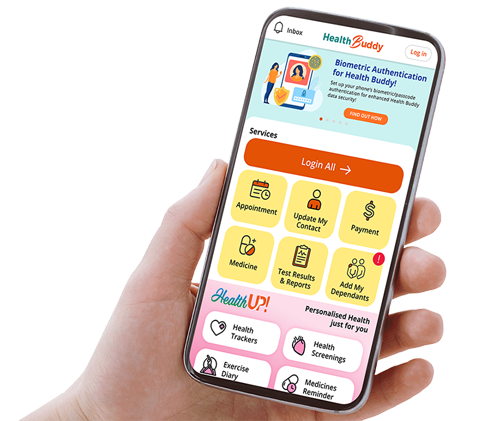National Cancer Centre Singapore will NEVER ask you to transfer money over a call. If in doubt, call the 24/7 ScamShield helpline at 1799, or visit the ScamShield website at www.scamshield.gov.sg.
Cancer Therapeutics Research
- Cancer Epigenome
- Cancer Therapeutics Research
- Cell Therapy and Cancer Vaccine
- Precision Radiotherapeutics and Oncology Programme
- Translational Research in Gastrointestinal Cancer
- Genomic Medicine
- Programme in Translational and Clinical Liver Research
- Translational Cancer Biology
- Laboratory of Applied Human Genetics
- Blood Cancer and Stem Cell Lab
- Breast Cancer Translational Research

| Research head: |
Prof Gopal Iyer A/Prof Daniel Tan |
| Research team: |
DDr Hong Sheng QUAH Dr Darren TOH Dr Constance LI Dr Wei Yi TOY Dr Nan JIANG Fui Teen CHONG Dawn LAU Hui Sun LEONG HARIRAMAN Bhuvaneswari Win Pin NG Arcinas Camille Esther WALET (PhD student) Wei Kiang LIM (PhD student) Lisda SUTEJA (PhD student) |
The Cancer Therapeutics Research Laboratory is led by A/Prof. Daniel Tan (medical oncologist) and Prof. Gopal Iyer (head and neck surgeon), both nationally funded clinician-scientists. The primary objective is to drive advances in cancer therapeutics through a translational, three-pronged strategy:
a. Multi-dimensional interrogation of samples obtained at point-of-care
b. Establishing representative models to study therapeutic response and biomarker discovery
c. Application of novel agents and/or combinations in the setting of co-clinical trials
a. Interrogating Tumour Samples
Samples: To study tumour heterogeneity and cancer evolution—two highly dynamic processes—and as a way to better understand exceptional therapeutic response, samples are acquired at the point of clinical care from resected surgical samples in spatially discrete regions or serial tissue and liquid biopsies.
Multi-dimensional profiling and single-cell analysis: Routine profiling includes targeted gene panels, whole-exome, whole-genome and RNA-seq. Single-cell RNAseq can further answer questions pertaining to how heterogeneity contributes to drug response and metastasis.
Immunophenotyping: The role of the immune therapy is now firmly established in lung and head and neck cancers. We intend to apply deep profiling strategies to understand the immune repertoire for the identification of specific immune phenotypes and exhausted populations that have the capacity for reactivation.
b. Preclinical Disease Modelling
We have optimised protocols to establish patient-derived 2D and 3D cultures from head and neck squamous cell carcinoma and lung cancer. These models are to support projects that are ex vivo representatives of clinical scenarios (exceptional responders, screens, co-clinical trials, among others). These are being expanded to models that also include the tumor microenvironments including immune cells.
c. Translational Therapeutics
Novel therapies: Our laboratory closely interfaces with the Experimental Cancer
Therapeutics Unit (Phase I unit) in interrogating bio-specimens to enable the discovery of next-generation biomarkers and explore new combinatorial approaches.
Exploiting combinatorial approaches: We are also exploring combinations that can be used to limit the evolution of resistance or maintain a stem-like phenotype.
These insights can be applied to the clinic through innovative, adaptive clinical trials as well as neoadjuvant or window-of-opportunity regimens.
Selected publications:
- Rasheed SAK, Leong HS, Lakshmanan M, et al. GNA13 expression promotes drug resistance and tumor-initiating phenotypes in squamous cell cancers.
Oncogene. 2018;37:1340–1353. - Tan DSW, Chong FT, Leong HS, et al. Long noncoding RNA EGFR-AS1 mediates epidermal growth factor receptor addiction and modulates treatment response in squamous cell carcinoma. Nat Med. 2017;23:1167–1175.
- Chia S, Low JL, Zhang X, et al. Phenotype-driven precision oncology as a guide for clinical decisions one patient at a time. Nat Commun. 2017;8:435.
- Nahar R, Zhai W, Zhang T, et al. Elucidating the genomic architecture of Asian EGFR-mutant lung adenocarcinoma through multi-region exome sequencing. Nat Commun. 2018;15;9:216.
Keep Healthy With
© 2025 SingHealth Group. All Rights Reserved.
















